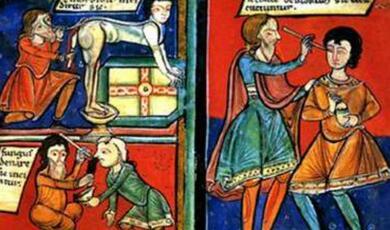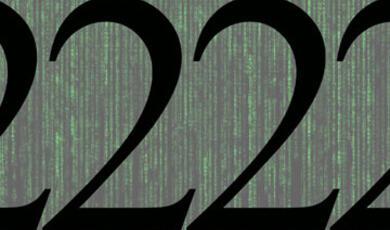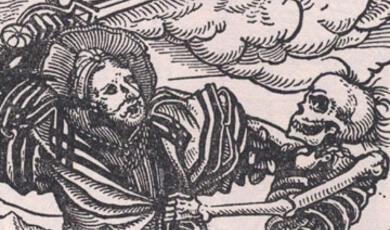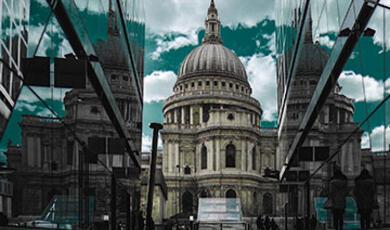Fashion and Visual Culture in the 19th Century: Women in Red
Share
- Details
- Transcript
- Audio
- Downloads
- Extra Reading
Fashionable dress in the nineteenth century had a moral dimension. Introducing the theme of the morality and modernity of fashion, this lecture considers the visual representation of the fallen women, courtesan and prostitute in the arts of the period. It examines the symbolic language of clothes and the way that it was used to register a woman’s fall from respectability to deviancy. Social and moral identities were of great importance in the new public spaces of the nineteenth-century city along with a need to be able to register identities immediately through visual signs. In this context visual images of women’s dress and appearance were of great significance in embedding this moral language of clothing.
This lecture will draw on medical and religious texts, on literature and on paintings and engravings to set out the relationship between fashion, modernity, art and morality.
Download Transcript
04 March 2014
Women in Red:
Dress, Morality and Visual Culture in the Mid-Nineteenth Century
Professor Lynda Nead
SLIDE: publicity shot, Ripper Street, BBC, 2013.
In the previous two lectures in this series I have looked at the ways in which fashionable dress became a cipher for the qualities associated with modern urban life in the middle decades of the nineteenth century. In particular I have looked at the habit noir of the bourgeois gentleman and how it made visible subtle signs of class and masculine identity; small adjustments of lapel shape, trouser length and cut of coat could differentiate the true gentleman from the upstart or poser. In the second lecture, I considered the crinoline, the definitive shape of nineteenth-century female dress, and whether it should be seen as a sign of female passivity and enslavement or a symbol of physical presence and power. I hope that what has emerged from the lectures so far is that fashionable dress articulated the wearer’s identity, in terms of age, class and wealth and that visual artists in this period drew on the language of clothes to create meaning and narrative in their work.
In this evening’s lecture I am going to consider how the language of clothes was also a moral and a sexual language. By looking at the representation of women’s dress in paintings and prints produced in France and Britain in the middle decades of the nineteenth century, I will argue that dress and appearance were the most stable elements in defining female respectability or non-respectability and that audiences were familiar with these signs and, in most cases, were quick to read elements of clothing and physical appearance in terms of moral significance. I would also suggest that the figure of the woman in red, that is, the nineteenth-century fallen woman or prostitute (and as we shall see they were not the same thing at all) was repeated so often and became so fixed and stable, that even today we have inherited a mythic figure of the Victorian prostitute. The figure of the bedraggled and tragic streetwalker is an all too familiar stereotype in recent film and television, see for example the figures of the brothel keeper, Susan, and the prostitute Rose in the BBC’s recently-broadcast Ripper Street. What do we expect when we see these fallen female figures, what tells us that they are not respectable, that they are immoral? Gaudy colours, perhaps; excess and shabby detail; a bonnet, very often, preferably decorated with a feather; skirts that reveal ankles and boots…but let’s leave these details for the moment, for we shall we see them deployed far more clearly when we look at nineteenth-century images of women in red.
The other point to make before we start looking at images of fallen women is that attitudes to and the regulation of prostitution were very different on the two sides of the Channel. In both France and Britain prostitution was primarily seen as a social problem emanating from the large new cities of the nineteenth century, but whereas in Paris prostitution was legally regulated and policed, in London and in other British cities prostitution was not controlled by the law until the Contagious Diseases Acts were introduced to certain naval and garrison towns in the 1860s. As Hollis Clayson describes in her 1991 study, Painted Love: Prostitution in French Art of the Impressionist Era, prostitutes in Paris were regulated by the police from around 1800, when a city-wide system was created that controlled the movements and health of an ‘officially tolerated population of prostitutes.’ (p. 10) Women were classified as either filles de maison (women who worked in brothels) or filles en carte (women who worked independently but who had been identified by the police) and once a woman was arrested for an act of prostitution, she was placed permanently on the police register and was required to attend sanitary inspections. There was little or no sense that a woman might move in and out of prostitution, that she might temporarily turn to prostitution through economic necessity; once apprehended, she became a permanent name on the police register. As the city grew in the first half of the nineteenth century, so the number of prostitutes was also seen to have grown and the issue was increasingly debated; those who supported regulation advocated increased control of and focus on the clandestine prostitutes, the women who were not registered – the barmaids and shop girls whose sexual identities were uncertain and who worked the streets beyond the visibility of the system of réglementation. As one French writer on prostitution stated in 1889: ‘Clandestine prostitution is much more dangerous than tolerated prostitution; it is a grave danger to morals through its pernicious influence.’ (Clayson, 15) This, then, was the greatest fear: the spectre of fallen women brushing shoulders with respectable women on the fashionable streets of the nineteenth-century metropolis and bringing about a sort of moral and sexual contamination. Parisian regulation was an attempt (a hopeless and patriarchal attempt, it should be said) to separate, absolutely and for ever, the respectable and the non-respectable female populations. And, as I will show in this lecture and in the fourth and final lecture next month, the creation of a visual stereotype of the fallen woman was a different but related attempt to make the distinction between fallen and respectable women emphatic and unambiguous. Uncertainty regarding moral and sexual identities not only threatened public order on the city streets, it was also believed to challenge the security and peace of the home, the mainstay of bourgeois society.
Opponents of police regulation of prostitution in France and Britain argued that the system amounted to little more than state sanctioning of immorality; in addition, it legitimised a double standard of morality. Only the women were regulated by the police system, only they were registered and medically checked; male sexual desire was accepted as an unavoidable, if regrettable, fact of nature, whereas active female sexuality was immediately defined as deviant and dangerous. Even when the Contagious Diseases Acts were introduced in England in the 1860s, to try and reduce the spread of venereal diseases amongst the soldiers and sailors of the empire, the fact that only women were subject to compulsory sanitary inspection made the law look naïve and ineffective.
So to summarise the key points that I have made thus far; prostitution in the nineteenth century was regarded as one of, if not the, key issue of social concern. As capital cities grew and became symbols of the power and wealth of nations, prostitution was regarded as an impediment in the healthy growth of the nation. As a system, it disobeyed the laws of bourgeois morals and economics; and its consequences could spread from the street to the home and from the garrison town to the empire. Little wonder, then, that the figure of the prostitute fascinated artists and preoccupied legislators and reformers, or that we are still fixated by her today.
It was never a simple or straightforward decision to choose the image of the prostitute for a painting intended for public exhibition in this period. On the other hand, it would certainly attract attention, from critics and visitors alike, and whether the artist was an academic mainstream painter, or identified with the avant-garde, there was no harm in some well-managed publicity.
SLIDE: CONSTANTIN GUYS, Deux Grisettes and deux soldats, nd / GUYS, House of Ill Repute, c.1860
In the first lecture in this series I discussed Charles Baudelaire’s fascination with contemporary fashion, which, along with other writers in this period, he saw as the purest expression of modern life. Fashionable dress was at once a symbol of the fleeting and transitory nature of the contemporary world, and it also expressed its epic and timeless beauty. Baudelaire read the details and minutiae of male dress, which he saw as the costume of a tragic modern hero, but the true poetry of modern life lay in women’s dress and above-all in the hyper fashion ability of the courtesans and prostitutes of the Second Empire. In his famous essay, ‘The Painter of Modern Life’, first published in Le Figaro in 1863, Baudelaire praised the work of the graphic artist Constantin Guys, whom he referred to only as Monsieur G., who had an especially sensitive eye for detail and the eloquent dress of contemporary women. In a section of the essay, sub-titled ‘Women and Prostitutes’, Baudelaire wrote:
SLIDE: extract from Charles Baudelaire, ‘The Painter of Modern Life’.
“She [the courtesan] advances towards us, glides, dances, or moves about with her burden of petticoats, which play the part at once of pedestal and balancing-rod; her eye flashes out from under her hat, like a portrait in its frame. She is the perfect image of the savagery that lurks in the midst of civilization. She has her own sort of beauty, which comes to her from Evil always devoid of spirituality, but sometimes tinged with a weariness which imitates true melancholy. She directs her gaze at the horizon, like a beast of prey; the same wildness, the same lazy absent-mindedness, and also, at times, the same fixity of attention. She is a sort of gipsy wandering on the fringes of regular society, and the triviality of her life, which is one of warfare and cunning, fatally grins through its envelope of show.”
The ambivalence of Baudelaire’s attitude to the courtesan emerges clearly from his writing; both repelled and deeply attracted to this savage and unregulated figure of femininity, it is clear that he identifies his own status as an outsider within mainstream bourgeois society with that of the prostitute. Later, he describes the various types of ‘fallen womanhood’ (of women ‘in revolt against society’) from the expensive courtesan, down the scale to the women in the lowest brothels, and even at this stage of their downward progress, he sees a peculiar deviant beauty in their appearance and ‘eccentric finery’.
The idea that once embarked on a life of prostitution, the prostitute inevitably and inescapably went through a rapid downward spiral until she met a premature and tragic death was repeated over and over again in the nineteenth century, in texts and images, novels and paintings, poems and illustrations, sermons and medical reports. In the same way that French police never removed a woman’s name from their register of prostitutes, so it seemed that the dominant myth of the fallen woman was that once a prostitute always a prostitute and that the fate of the prostitute was always despairing and tragic. Even Emile Zola, in his realist novel about a Second Empire courtesan, Nana, concludes with her being rejected by her wealthy lover and her beauty corroded by what we assume are the final stages of syphilis. Having described her plump beauty in previous chapters, the novelist relishes the description of her corrupted and abandoned body, which he evokes through the memorable phrase: ‘Venus was rotting.’
SLIDE: EDOUARD MANET, Nana,1877.
Of course, this is not the Nana that we see in Edouard Manet’s 1877 painting; in fact, the picture draws on the character as she is introduced in Zola’s novel L’Assommoir, a beautiful, vivacious and reckless working-class girl, who turns to prostitution at the end of the novel. Manet depicts the figure in a corset and petticoat, putting on her make-up in front of the seated man whose body is cut in half by the right edge of the canvas. It is a picture full of ornament and surface decoration, from the japonaiserie screen in the background, to the curvy gilt rococo frame of the sofa, the fragile legs of the mirror stand, and the embroidery on her shoes and stockings. It is a painting about commodities, about things and people that can be bought by the elegant gentleman with his gilt cane and crisp white shirt. Nana is plump and white, her red lips standing out against her skin as she turns her face towards the viewer. This woman is on show, she knows that she is on show, the embodiment of Baudelaire’s courtesan: ‘a perfect image of the savagery that lurks in the midst of civilization.’
SLIDE: PIERRE-AUGUSTE RENOIR, L’Assommoir, 1877-78.
In the same years, Renoir also created the illustrations for an expensive edition of L’Assommoir; in this image from earlier in the narrative, Nana is shown with friends on the Paris streets; her risky sexuality is conveyed through a combination of dress and demeanour. The girls dominate the space of the boulevard, they are expressive and flirtatious and their appearance is a cipher of their sexual power and eventual fall.
SLIDE: MANET, Masked Ball at the Opera, 1873-4
Manet’s Masked Ball at the Opera, painted just a few years earlier around 1873-4, also exploits the juxtaposition of partially clothed (or unclothed) women with the formal black and white evening dress of the bourgeois gentleman. It is not surprising, perhaps, that the painting was rejected by the selection jury of the Salon (which was the most important mainstream exhibition space in Paris at this time). Nana, I should mention, was also rejected by the Salon. It is a challenging image at nearly every level. The colour scheme is dark and reduced to a very limited range of tones; the composition is brutal and cuts figures at the edges of the canvas, regardless of narrative; and above-all, the subject is sensual and erotic. It depicts a scene of sexual business, of negotiation and commerce, set in the world of contemporary Parisian leisure.
The masked ball at the opera was part of the calendar of Parisian social entertainment and took place during the winter months until the carnival of mardi gras. The ball had been depicted by other artists in this period.
SLIDE: EUGÉNE GIRAUD, Le Bal de l’Opéra, 1866
The same motifs can be seen in Giraud’s painting: the legs of the figures on the balcony, the fancy dress costumes, the closely-packed flirting crowds.
SLIDE: MANET, Masked Ball at the Opera, 1873-4
But Manet’s treatment, his technique and style, seem to strip the subject of its innocence and reduce it to the subject of commerce. Whereas some of the men can be recognised as portraits, the women, who are either masked or in costume, are not – they lean towards the men, they whisper, they touch – and truncated as the crowd is by the two sides of the canvas, it seems as though this mass of sexual innuendo must go on and on beyond the frame of vision. Manet’s art was frequently one of provocation, with subjects drawn from the darker and more illicit sides of contemporary Parisian life. He was by no means the only painter to depict the modern prostitute, indeed, the subject was one way in which the avant-garde artist could be stake a claim to an advanced or vanguard position within the art world. By the end of the century, just at the time of the last independent Impressionist exhibition in 1886, Georges Seurat found a new pictorial language to represent the complex social and sexual identities of modern Paris.
SLIDE: GEORGES SEURAT, A Sunday Afternoon on the Island of the Grande Jatte, 1884-6
In A Sunday Afternoon on the Island of the Grande Jatte, 1884-6, Seurat moves away from the more painterly technique of the impressionists to what was seen as a method based on the science of optics and chromatics. In an attempt to render late-nineteenth century Parisians as an updated Panathenaic frieze, Seurat uses fashion to convey the formality and diversity of contemporary leisure. The warmth of the afternoon is shown by the receding areas of yellow-orange sunlight and green-blue shade and the whole of the foreground is cast in cool shadow. Workers and soldiers mingle with nursemaids and their charges, and the silhouetted figures of the fashionable couple on the right. This couple dominates the canvas; they are surrounded by dots of complementary colours, a halo of paint that makes them stand out from their environment. The style of the woman’s hat and the size of her bustle date the picture precisely; and the profile figures display both the stiffness and the laxity of this society. This is a cocotte and her lover, who absurdly are walking a little monkey on a lead – the monkey – a conventional symbol of lechery – identifies the sexual identity of the couple, as they perform a certain kind of respectability on this hot summer afternoon on an island in the Seine, a short boat ride from Paris.
I want now to move from the visual culture of France to that of Britain (English and British are frequently conflated in this period, with English often standing for the whole of Britain in this period). In making this move, I am fearful of making British art look second rate, or, even worse, of falling into stereotypes of prudish and hypocritical Victorians, so I want to contextualise my comments by emphasising the different aims and methods of high art in Britain and in France in the mid-nineteenth century. Both countries continued to be dominated by official academies of art and in both, there were artists who either conformed to the values of academic art or who attempted to find a different pictorial language. British art was haunted by an inferiority complex; compared to other European countries the Royal Academy of Art was established rather late and artistic leaders feared that British art and design were second rate compared to French and German and that unless a distinctive national school of art could be encouraged, the country would look like a philistine trading nation without a cultural identity. As the nineteenth century progressed some writers and cultural commentators began to argue that the kind of art that characterised the British school and that set it apart from other European schools of art was that based on the art of Hogarth.
SLIDE: WILLIAM HOGARTH, The Harlot’s Progress, plate 1, 1732
It took its subjects from modern life, it was narrative or anecdotal, and it was moral and didactic and thus fulfilled the lofty ambitions of history painting. It also had a strong national tradition and although some of the bawdier elements of Hogarth’s art were regretted, these writers were happy to call him the father of this British school of art. So there was a credible route for a painter of modern life in the mid-nineteenth century to choose the subject of the woman in red, the prostitute, but it was always a gamble and it involved negotiating different expectations of what art was and what it should and should not do.
As I discussed at the beginning of this lecture, in Britain there was no legislation regulating prostitution until the controversial Contagious Diseases Acts were introduced in the 1860s, nevertheless, from the 1840s and probably earlier, prostitution was one of the major issues of public concern and was often referred to in this period as ‘the great social evil.’
SLIDE: JOHN LEECH, ‘The Great Social Evil. Time: Midnight. A Sketch not a Hundred Miles from the Haymarket. Bella. ‘Ah Fanny! How long have you been GAY!’ Punch, 10 January 1857.
John Leech’s satirical cartoon, published in Punch in 1857, draws on most of the issues relating to debates on prostitution in this period. Commentators were troubled by the visibility of prostitutes; the large numbers of women who were believed to be involved (and statistics for London alone varied from 6,000 to 60,000 to the vaguer and more terrifying ‘legion’); and their association with the city and urban disease. Thus the physical stereotype of the prostitute became focussed specifically on the figure of the streetwalker. Leech works these elements in his cartoon. ‘The Great Social Evil’ shows two rain-drenched streetwalkers in a doorway near the Haymarket (an area seen to be the epicentre of London prostitution in this period) at midnight. They are inappropriately dressed and the caption plays on the meanings of the word ‘gay’, referring in this period both to happiness and to prostitution.
Visual representations of the prostitute relied heavily on the construction of a physical stereotype; furthermore since an individual’s physical appearance was believed to be a reflection of his or her mental and moral condition, so the outward appearance of the prostitute was understood to be a manifestation of her deviancy and immorality. The popular Victorian sciences of phrenology and physiognomy provided a language for this physical classification; in 1847, for example, Charles Dickens refused to admit one woman as an inmate to his reformatory at Urania Cottage on the grounds that: ‘she had a singularly bad head, and looked discouragingly secret and moody.’ This correlation between physical and moral states is one of the most characteristic features of discourses on prostitution in the nineteenth century. In 1840, the medic William Tait published his book Magdalenism, based on his observations of prostitutes in the Lock Hospital in Edinburgh; he stated:
SLIDE: Quotes from William Tait, Magdalenism, 1840 and William Logan, The Great Social Evil, 1871.
“Her once, free, and smiling countenance, which bespoke the inward purity of her mind, is now distorted with the workings of her vile and corrupted affections…the effects of sin are not more plainly and fearfully displayed on any class of human beings than on fallen and decayed prostitutes…It may be stated generally, that in less than one year from the commencement of their wicked career, prostitutes bear evident marks of their approaching decay; and that in the course of three years very few can be recognised by their old acquaintances, if they are so fortunate as to survive that period”.
Tait traces the shift from virtue to vice through the transformation in the woman’s appearance; indeed, Venus is rotting. The fall from virtue is registered in terms of a shift from natural simplicity to showy detail as sin literally breaks out onto the surface of the body. As the city missionary, William Logan, confirmed:
“For the sweet ringing laugh – the wild shriek of mirth or the breast-shattering cough of consumption; for the simple dress – the tawdry rags of what was once a fashionable dishabille, won by the wages and torn to tatters in the service of sin. The stereotype encapsulated the myth of the downward progress of the prostitute; by emphasising the prostitute’s faded looks, her painted face and her gaudy, seedy clothes she was located within the myth: her appearance signified that she had seen better times and was on the inevitable path to a miserable and early grave”.
Artists drew on and reinforced the physical stereotype of the streetwalker throughout the nineteenth century. In a series of prints published in 1847-8 and primarily intended as a tract against alcohol, George Cruikshank depicted the consequences of alcoholism on a respectable home and family. The Bottle and its sequel The Drunkard’s Children trace as one theme the career of the daughter of the alcoholic.
SLIDE: GEORGE CRUIKSHANK, The Bottle, plate 1, 1847.
In the first plate of The Bottle the happy family home is shown on the first occasion that the bottle is introduced by the father. The daughter is securely located within the private sphere, engaged in domestic duties; and her virtue is also signalled through her dress and appearance which are neat, tidy and modest. Subsequent plates trace the collapse of the family home and finally the death of the wife, who is murdered by her husband in a drunken rage.
SLIDE: GEORGE CRUIKSHANK, The Bottle, plate 8, 1847.
In the final plate the bottle is seen to have done its work; the father is a lunatic and the daughter, we are told by the caption, has turned to ‘Vice and to the Streets.’ The fall from virtue is signified in the girl’s clothes. Instead of the plain dress and apron seen in the first plate, she now wears a boldly contrasting outfit: short skirt, kid boots and feathered bonnet – all components of the physical stereotype of the prostitute. In a bowdlerized version of the plate this process is reversed.
SLIDE: GEORGE CRUIKSHANK, bowdlerized version of The Bottle, plate 8.
The wording of the caption is altered to: ‘The Bottle has Done Its Work…the Boy and Girl Left Destitute and Thrown on the Streets’; this cleaning up of the narrative is shown in the plate through changes in the girl’s clothes: the skirt is lengthened and the style and tone modified; the bonnet is simplified and the feather removed.
In the second series, The Drunkard’s Children, Cruikshank continues the narrative of the daughter’s downward progess through gin-shops and low dancing-rooms:
SLIDE: GEORGE CRUIKSHANK, The Drunkard’s Children, plate 4, 1848
Until, in the final plate, Cruikshank shows us the girl’s end:
SLIDE: GEORGE CRUIKSHANK, The Drunkard’s Children, plate 8, 1848.
The caption to the plate reads: ‘The Poor Girl, Homeless, Friendless, Deserted, Destitute, and Gin Mad, Commits Self Murder’, and she throws herself from a bridge into the River Thames.
As you begin to look more at Victorian visual culture, you realise how often these motifs and themes are repeated:
SLIDE: [C. CLARKE], ‘As I Was and As I Am’, Contrasts, c.1850.
SLIDE: [C. CLARKE], ‘In Luck and Out of Luck’, Contrasts, c.1850
SLIDE: ‘A Social Contrast. Up in the World. Down on her Luck’, Days’ Doings, 8 July 1871
Furthermore, this pictorial language was not just used by graphic artists, it was also used by painters, creating works intended for public exhibition. If any English artist in the middle of the nineteenth century had a claim to inherit the mantle of Hogarth it was William Powell Frith. Frith had an exceptional skill in composing large groups of figures into ordered and visually legible modern life subjects. His panoramas of Ramsgate Sands, Paddington Station and Derby Day were hugely successful and won him royal patronage and a very considerable fortune. In 1862 he was working on a series of paintings called The Times of Day, and although he never completed them (he was asked instead to paint the official commemorative group portrait of the marriage of the Prince of Wales) the preparatory sketches give us a good idea of what they might have looked like.
SLIDE: W.P.FRITH, The Times of Day. 1. Morning – Covent Garden, 1862.
In each of the three scenes of morning, noon and night, Frith chooses a location in London that is associated with prostitution at that particular time of day.
SLIDE: W.P. FRITH, The Times of Day. 2. Noon – Regent Street, 1862.
SLIDE: W.P. FRITH, The Times of Day. 3. Night – Haymarket, 1862.
In his autobiography, Frith referred to ‘an overdressed and berouged woman whose general aspect plainly proclaims her unhappy position.’
For the young group of artists who called themselves the Pre-Raphaelite Brotherhood, British art, as represented in this period by the Royal Academy of Arts, was in a parlous state and in desperate need of reform; they advocated a return to the stylistic principles of early Renaissance art and to the serious aims of high art, rather than the whimsy and anecdote that prevailed at the R.A. They also advocated that artists should turn to modern life for the subjects of their art; in an article published in 1850 in the short-lived Pre-Raphaelite periodical, The Germ, artists were urged to seek inspiration in their own times not in the distant past, questioning: ‘Why to draw a sword we do not wear to aid an oppressed damsel, and not a purse which we do wear to rescue an erring one.’ The theme of the contemporary fallen woman recurs with regularity in Pre-Raphaelite painting in the 1850s and 1860s.
SLIDE: W.H. HUNT, The Awakening Conscience, 1854.
It is the subject of William Holman Hunt’s The Awakening Conscience, which was exhibited to a mixed reception at the Royal Academy in 1854, and which depicts a kept woman, in a state of semi-undress, and her lover, as she suddenly recalls her lost childhood innocence. John Ruskin imagined the inevitable consequences of her awakened conscience when he described: ‘the very hem of this girl’s dress, which the painter has laboured so closely thread by thread, has a story in it, if we think how soon its pure whiteness may be soiled with dust and rain, her outcast feet, failing in the street.’ Having recognised her sexual guilt, this woman cannot escape her fate, she cannot simply return to respectable society but must follow her inevitable downward path to death and perhaps eventual salvation.
SLIDE: DANTE GABRIEL ROSSETTI, Found, beg. 1854.
Rossetti’s painting Found was begun in 1854 and left unfinished. It shows the meeting of country drover with his former sweetheart who has become a city prostitute. In a letter of 1873, Rossetti stated: ‘The woman should wear something with a pinkish tinge…pretty showy, but seedyish.’ The way in which Rossetti developed this ‘showy, but seedyish’ appearance can be seen be examining the preparatory sketches and the oil painting.
SLIDE: D.G. ROSSETTI, Found / D.G. ROSSETTI, Study for Found, 1853.
Comparing the finished drawing, dated 1853, to the oil painting, it can be seen that the shawl was changed from plain black to a pale, patterned mantle with bedraggled silk fringing and the material of the dress was altered from white to the rose pattern with gathering at the sleeves and neck. So, through a shift from simplicity and plainness, to pattern and showy detail and texture, the faded finery and seedy gaiety of the prostitute is signified. The prostitute is on her decline to death – her clothes signal that she has seen better days, they are now soiled and too flimsy for walking the streets. Through the juxtaposition of the drover in his traditional pale coloured smock and the prostitute, Found contrasts the health of the countryside with the corruption of the city, and the honest morality of the drover who begins his work with the first light of day, with the deviancy and unnaturalness of the prostitute who has walked the city streets all night and whose final desperate end is suggested by the bridge in the background.
The physical stereotype of the prostitute sharpened the ideological boundaries between the pure and the fallen. As it was repeated across all forms of culture and recognised by its audiences, it was possible to believe that non-respectable women could be recognised and set apart from the respectable, that you could, with certainty, tell the difference between the honest woman and the fallen woman. The belief in visible difference, based on the language of clothes was an ideological necessity…and yet, there were regular instances of mistaken identity. In her wonderful book, Prostitution and Victorian Society, the historian Judith Walkowitz cites a number of examples of wrongful arrests based on the police misinterpreting a woman’s appearance; as one judge summed up in a case of 1872: ‘…it so happens nowadays there [are] such peculiarities in dressing, even by persons of good character, that it would be difficult to draw the line.’
SLIDE: [C.J. CULLIFORD], Scene in Regent Street. Philanthropic Divine: ‘May I beg you to accept this good little book. Take it home and read it attentively. I am sure it will benefit you.’ Lady: ‘Bless me, Sir, you’re mistaken. I am not a social evil, I am only waiting for a bus.’ c.1865.
These errors occurred frequently enough for the subject to become the butt of jokes; a woman in a street is approached by an evangelical clergyman who, believing her to be a prostitute, tries to reclaim her. She rejects his attempts and assures him: ‘I am not a social evil, I am only waiting for a bus.’
By the 1870s the lines of respectability were becoming blurred; clothes could not be relied upon to identify a woman’s sexual morality; femininity was changing and the prostitute, it seemed, could not be distinguished from ‘respectable’ society. This will be the subject of the final lecture next month.
© Professor Lynda Nead, 2014
This event was on Tue, 04 Mar 2014
Support Gresham
Gresham College has offered an outstanding education to the public free of charge for over 400 years. Today, Gresham plays an important role in fostering a love of learning and a greater understanding of ourselves and the world around us. Your donation will help to widen our reach and to broaden our audience, allowing more people to benefit from a high-quality education from some of the brightest minds.


 Login
Login







